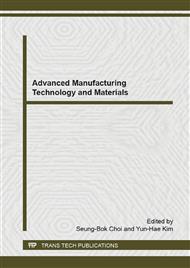[1]
Samuel J. Huang. Polymer Waste Management-Biodegradation, Incineration, and Recycling. J Macromol Sci, Pure Appl Chem, 1995, 32(4):593-597.
Google Scholar
[2]
Robert Wo Lenz. Biodegradable polymer sand PLA stics in Japan: research, development, and applications[R]. Baltimore, Maryland: Japanese Technology Evaluation Center, JTEC/WTEC Program Loyola College in Maryland, (1995).
Google Scholar
[3]
Gross RA, Kalra B. Biodegradable polymers for the environment. Science, 2002, 297. (5582):803-807.
DOI: 10.1126/science.297.5582.803
Google Scholar
[4]
Crank M, PatelM, Schleich J, et al. Techno economic Feasibility of Large Scale Production of Biobased Polymers in Europe(Pro BIP)[R].Sevilla,Spain:European Commissions Institute for Prospective Technological Studies (IPTS), (2004).
Google Scholar
[5]
Abdel-Rehim H A, Yeshii F, Kume T. Polymer Degradation and Stability. European Journal of Medicinal Chemistry, 2004, 12(85):689-695.
Google Scholar
[6]
Meri Suhartini, Hiroshi Mitomo, Naotsugu Nagasawa, et al. Radiation cross-linking of poly(butylene succinate) in the presence of low concentrations of trimethallylisocyanurate and its properties,Journal of Applied Polymer Science,2003, 88(9):2238-2246.
DOI: 10.1002/app.11944
Google Scholar
[7]
Chunlei Song, Yuming W, Wengde Zhang, Radiation Cross-linking of Biodegradable Poly(butylene succinat e) and Its Biodegradability, journal offunctionalpolymer, 2002, 15(2):152-156. (in Chinese).
Google Scholar
[8]
Chunlei Song, Bingzheng Jiang. radiation cross-linking of biodegradable poly(butylene succinat e and its heat distortion behavior, Acta poltmerica sinica, 2001, 15(5):691-693. (in Chinese).
Google Scholar
[9]
Hao Liu, Changyu Han, Lisong Dong, Study on the Radiation Cross-linking of Poly(Butylene Succinate), journal of henan university(natural science), 2009, 39(4):366-369. (in Chinese).
Google Scholar
[10]
Song J B, Ren M Q, Song C L, et al The effect of Co-60 gamma-rays crystal structure melting crystallization behavior of poly(butylene succinate).Polymer International, 2004, 53(11):1773-1779.
DOI: 10.1002/pi.1579
Google Scholar
[11]
Min Zhang, Lei Wang, Wei Han et al, Synthesis and Biodegradability of P(BS-co-DGA), Plastics, 2007, 36(3):50-53. (in Chinese).
Google Scholar
[12]
B L Seal, T C Otero, A Panitch Polymeric biomaterials for tissue and organ regeneration[J]. Materials Science and Engineering, 2001, 36(34):147-230.
DOI: 10.1016/s0927-796x(01)00035-3
Google Scholar
[13]
Min Zhang, Xiao Xia Wang, Baojian Liu et al, Study on Biodegradable Behavior of Polyesters in the Soil of Shanxi Local, polymer materials science and engineering, 2008, 24(1): 91-93. (in Chinese).
Google Scholar


